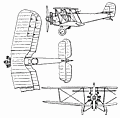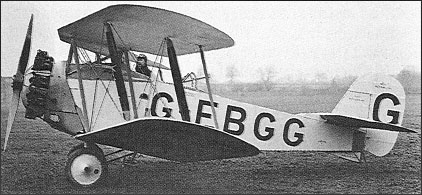|
| Designed by Wilfrid T Reid to meet Air Ministry Specification
3/22 issued in June 1922 for a two-seat fighter,
the Bloodhound was flown for the first time at the end
of May 1923. Featuring a welded steel-tube fuselage
and wooden wings, and powered by a 425hp Bristol
Jupiter IV engine, the Bloodhound carried an armament
of two synchronised 7.7mm Vickers
machine guns and a Lewis gun of similar calibre on a
Scarff mounting on the rear cockpit. Three additional
Bloodhounds were built to the order of the Air Ministry,
the first of these being of all-metal construction and the
others having wooden wings and tail. All three were
powered by the Jupiter IV, but the engine of the third aircraft was fitted with an RAE supercharger. The three
aircraft were delivered to Martlesham and Farnborough
between March and September 1925, but no production
was undertaken. The original prototype was
successively fitted with the Jupiter V and VI, and
served primarily as an engine test bed.
 | A three-view drawing (800 x 787) |
| WEIGHTS |
| Take-off weight | 1921 kg | 4235 lb |
| Empty weight | 1141 kg | 2515 lb |
| DIMENSIONS |
| Wingspan | 12.24 m | 40 ft 2 in |
| Length | 8.08 m | 27 ft 6 in |
| Height | 3.25 m | 11 ft 8 in |
| Wing area | 45.89 m2 | 493.96 sq ft |
| PERFORMANCE |
| Max. speed | 209 km/h | 130 mph |
|
Do you have any comments?
|
| 
COMPANY
PROFILE
All the World's Rotorcraft
|







